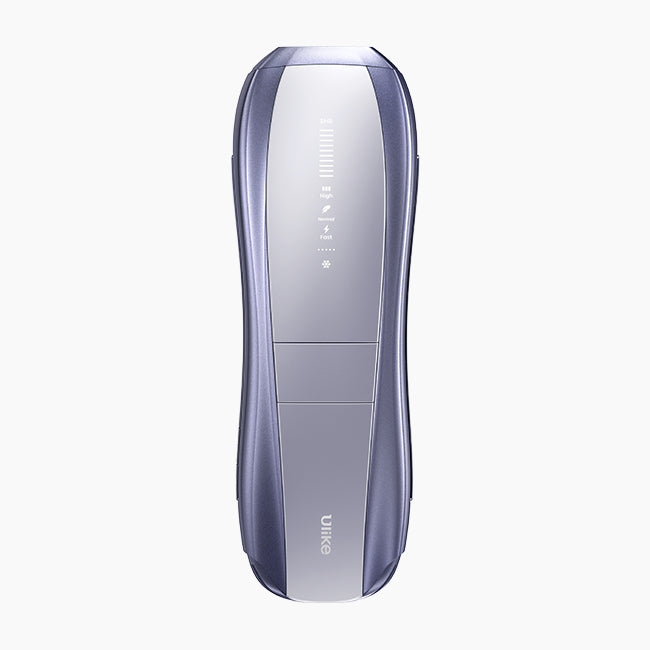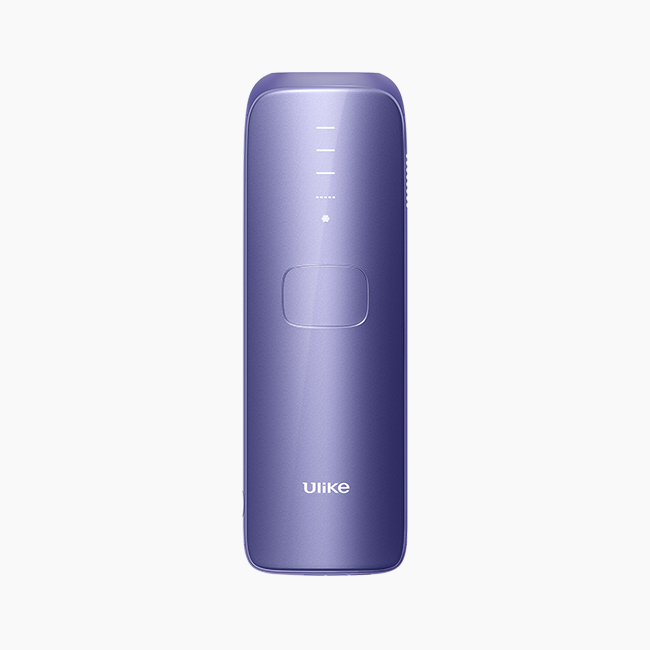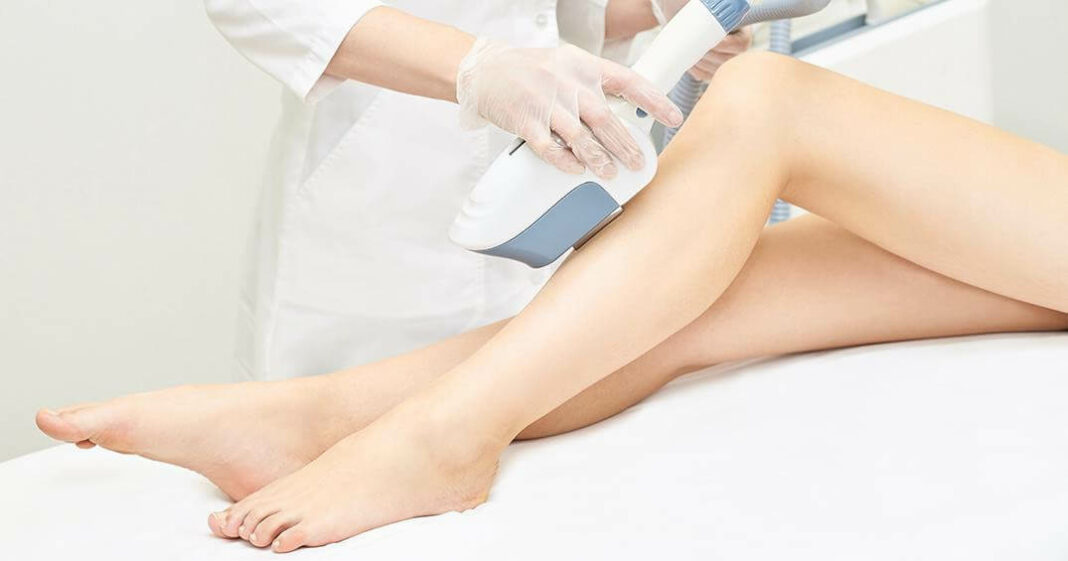
Laser hair removal saves you from the trouble of removing unwanted hair every day and the frustration of dull hair poking out of your skin making it appear rough. A few years of hairless skin is worth the expensive treatment. However, there is more to laser hair removal than the price you are paying.
The laser uses a highly intense beam of light and at times there are not many safety mechanisms to protect the skin resulting in side effects of the laser. Although most side effects like redness and irritation subside on their own after a while, some uncommon yet serious adverse effects like burns need special attention.
Thus, in this article, we are going to discuss laser burns so that you can treat them if you have any, avoid them in the future, or prevent them in the first place. Also, if you wondering if laser hair removal can cause cancer, give does laser hair removal cause cancer? a read.
What are Laser Hair Removal Burns and How Do You Get Them?
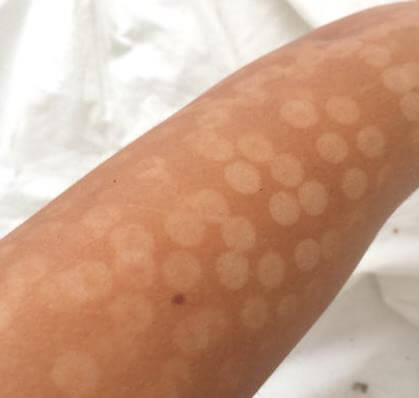
Laser burns are the overheating and burning of your epidermis caused by high-intensity radiation from the laser device. These are not common because expert clinicians take necessary precautions, keep their devices in the best condition, and guide the patient about the dos and don’ts of laser in detail.
However, you end up with the severe side effect of the laser when your skin tone is too tan for the laser, your laser surgeon is not skillful, the gel used before the laser is not properly used, the hygiene is not maintained, or the manual of hair removal laser is not followed adequately, laser hair removal may have some side effects and risks .
Signs and Symptoms of Laser Burns
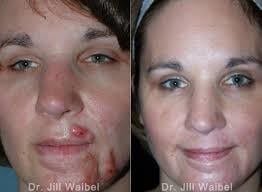
Clinical features of burns from laser hair removal can range from mild to severe. You need to treat them depending on the severity of the burns. So, let us first know what are the presenting features of laser burns.
1. Redness and Irritation:
Redness is the mildest form of a laser burn and is not even considered a side effect. It can be accompanied by irritation. Both go away on their own. Moreover, all degrees of laser burns are associated with pain.
2. Skin Swelling and Blistering
If the intensity of the laser is too high while your skin is delicate or you have tanned skin, redness can progress to skin swelling which has the shape of the laser device. Additionally, you can experience blisters.
3. Crusting and Color Changes in the Skin
The blisters crust and peel off eventually. Moreover, the burns leave their marks and cause skin color changes which are hard to treat.
Treatment of Burns From Laser Hair Removal
1. Wash with Plenty of Room Temperature Water
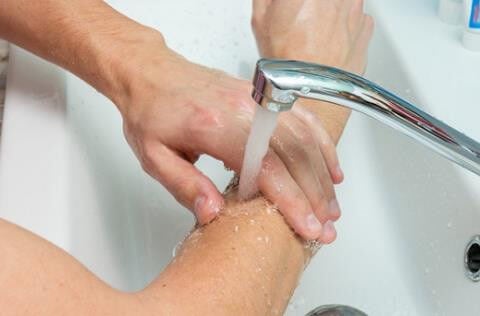 The first thing we should do in any kind of burn is to neutralize the heat which is done by washing the area with plenty of water. So, keep water running over the burning skin until you feel no painful or burning sensation.
The first thing we should do in any kind of burn is to neutralize the heat which is done by washing the area with plenty of water. So, keep water running over the burning skin until you feel no painful or burning sensation.
Also, remember that you should use slightly cool or room temperature water and never cold water. This is because cold water delays healing and the aim to wash the skin is only to prevent progressing burns.
2. Keep the Area Cool
Once the pain has gone, it is time to reduce the inflammation or prevent it. For this purpose, avoid staying in a hot environment. Keep your room temperature cool and also apply a cool compress over the burnt area for about half an hour.
3. Dress the Burnt Area
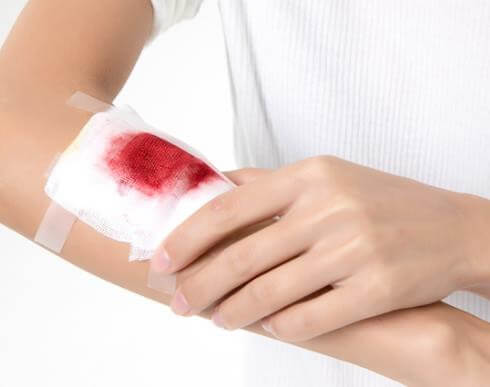 The next step is to protect the burn area along with blisters or crusting skin from infections and friction. For this purpose, take a soft gauze or a thin cling film. But the timing of this step depends upon how severe your burn is.
The next step is to protect the burn area along with blisters or crusting skin from infections and friction. For this purpose, take a soft gauze or a thin cling film. But the timing of this step depends upon how severe your burn is.
Also, do bind the gauze or film tightly around the burn. Keep it as gentle and loose as possible. Additionally, covering the area will prevent you from touching or scratching it.
4. Treatment for Pain
One thing you would be feeling in all types of laser burns is pain. It might be bearable or too intense to be tolerated. So, take a systemic painkiller as soon as you are done with washing the burn. You can use paracetamol, naproxen sodium, or ibuprofen to relieve the pain.
5. Prevention of Infection
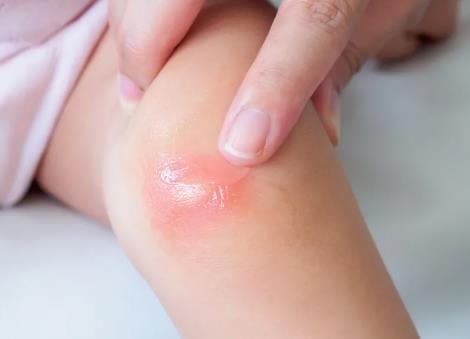 Burnt skin is prone to infection. One way to prevent it is to keep the area covered which might not be enough if your burn is too severe. So, use an antimicrobial ointment to prevent the intrusion of any bacteria, viruses, or other microbes into the skin.
Burnt skin is prone to infection. One way to prevent it is to keep the area covered which might not be enough if your burn is too severe. So, use an antimicrobial ointment to prevent the intrusion of any bacteria, viruses, or other microbes into the skin.
Also, ointments are helpful when you are not using any dressing, in the beginning, to let the heat flow out of the skin.
6. Avoid Sunlight and Tight Clothes
Sunlight is your worst enemy when you are preparing for laser hair removal, going through it, after it, or even when you get laser burns. Heat and UV radiations of the sun trigger the pain and prevent healing. So, stay indoors, wear UV-protective clothes, and use sunscreen if possible.
Also, friction from the clothes can irritate or peel the skin over the burnt area. So, wear loose clothing that does not come in contact with your skin. It will also help your skin breathe.
7. Use Gentle Skincare Products
You should avoid using products with hard chemicals or active ingredients until your burn has started recovering. So, do not use retinol, AHAs, BHAs, and similar products.
Also, do not use thick or oil-enriched products either because they entrap the heat and prevent the burn from healing. Healing of the burn can take 2 to 4 weeks and complete recovery takes longer. So, make sure to consult a dermatologist before using any skincare, grooming, or makeup product.
8. Treatment to Soothe the Burns and Boost Healing
 Soothing skincare products like aloe vera gel are the best ones when your burn is healing. This keeps the skin cool, stimulates cellular regeneration, and prevents scarring.
Soothing skincare products like aloe vera gel are the best ones when your burn is healing. This keeps the skin cool, stimulates cellular regeneration, and prevents scarring.
In addition, vaseline or any petroleum jelly works wonders to boost skin surface healing. Other natural products like rose water can also be helpful.
9. Go to Your Doctor
1st-degree burns and mild 2nd-degree burn is treatable at home as long as you follow the treatment protocol. Severe 2nd-degree burn and 3rd-degree burn needs special attention.
So, if your burn is severe while you are at the clinic, have the clinician treat it right away. Or if you are not getting the treatment from a doctor, immediately go to a nearby hospital and have it treated.
Additionally, consult a dermatologist if you experience that your burn is not responding to home remedies.
Ways To Avoid Burns From Laser Hair Removal
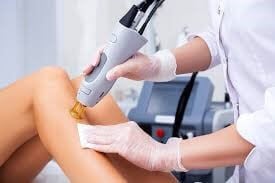
Treating burns can quite be a problem. But preventing them is no big deal. All you need to do is follow these precautions.
1. Choose a Professional Laser Hair Removal Clinic
Do your research before going for laser hair removal. Do not go for cheap packages or unknown laser salons. Rather, ensure to check the reviews, qualifications of the laser surgeon, registration of the clinic, condition of the equipment, and license of the laser technicians.
2. Talk to Your Doctor in Detail
Most good laser hair removal salons offer a free initial consultation. So, have a heart-to-heart talk with your doctor about your expectations, the procedure of the laser, aftercare, and other things.
Also, discuss different types of lasers with the doctor and choose the right one for yourself. You can get yourself familiarized with different types of lasers with types of laser hair removal machines
3. Prepare Your Skin For the Laser
You cannot just go and have a laser session anytime. Rather you need to specifically prepare your skin for laser hair removal. For example, the laser cannot be done on waxed skin. So, you have to shave your hair and let them go to the recommended length.
Additionally, your skin must be exfoliated beforehand and contain no products on it. Furthermore, you can check how to prepare skin for laser hair removal here.
4. Follow the Pre-Laser Precautions
In addition to preparing your skin for laser, there are several precautions you should take to avoid the side effects of laser. These include regular use and reapplication of sunscreen along with avoidance of sun exposure, pausing the use of harsh skincare products, and preventing skin from tanning.
These precautions should be started at least 15 days before your laser hair removal session. Also, you can ask your doctor to explain all the necessary prerequisites for laser.
5. Never Forget the Aftercare
Aftercare of laser hair removal is as important as skin preparation and precautions. The essential parts of laser aftercare are moisturizing the skin, avoiding sun exposure, not taking hot showers, keeping the use of active skincare ingredients on pause, wearing loose clothes, and using cold compresses.
But the good thing is you only need to follow this for 24 to 48 hours after the laser. So, you can go on with your normal routine afterward. Also, as laser hair removal requires multiple sessions, shave your skin in between them instead of using any other hair removal method.
Conclusion
Laser hair removal can cause skin burns when the standard procedure of the laser is not followed. Additionally, it can cause long-term after-effects.
So, if you ever get laser burns, you can treat them on your own with skin-cooling treatments, painkillers, antibiotics, healing ointments, and soothing skincare. However, you need to go to a doctor if the burn is severe.
